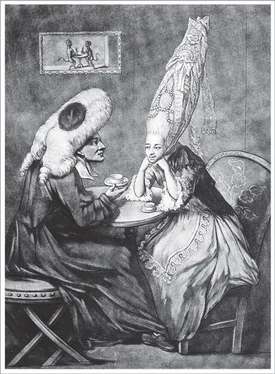Bill Bryson - At Home
Здесь есть возможность читать онлайн «Bill Bryson - At Home» весь текст электронной книги совершенно бесплатно (целиком полную версию без сокращений). В некоторых случаях можно слушать аудио, скачать через торрент в формате fb2 и присутствует краткое содержание. Жанр: Старинная литература, на английском языке. Описание произведения, (предисловие) а так же отзывы посетителей доступны на портале библиотеки ЛибКат.
- Название:At Home
- Автор:
- Жанр:
- Год:неизвестен
- ISBN:нет данных
- Рейтинг книги:4 / 5. Голосов: 1
-
Избранное:Добавить в избранное
- Отзывы:
-
Ваша оценка:
- 80
- 1
- 2
- 3
- 4
- 5
At Home: краткое содержание, описание и аннотация
Предлагаем к чтению аннотацию, описание, краткое содержание или предисловие (зависит от того, что написал сам автор книги «At Home»). Если вы не нашли необходимую информацию о книге — напишите в комментариях, мы постараемся отыскать её.
At Home — читать онлайн бесплатно полную книгу (весь текст) целиком
Ниже представлен текст книги, разбитый по страницам. Система сохранения места последней прочитанной страницы, позволяет с удобством читать онлайн бесплатно книгу «At Home», без необходимости каждый раз заново искать на чём Вы остановились. Поставьте закладку, и сможете в любой момент перейти на страницу, на которой закончили чтение.
Интервал:
Закладка:
Many people grew so unused to being exposed to water in quantity that the very prospect of it left them genuinely fearful. When Henry Drinker, a prominent Philadelphian, installed a shower in his garden as late as 1798, his wife Elizabeth put off trying it out for over a year, “not having been wett all over at once, for 28 years past,” she explained.
By the eighteenth century the most reliable way to get a bath was to be insane. Then they could hardly soak you enough. In 1701, Sir John Floyer began to make a case for cold bathing as a cure for any number of maladies. His theory was that plunging a body into chilly water produced a sensation of “Terror and Surprize” which invigorated dulled and jaded senses.
Benjamin Franklin tried another tack. During his years in London, he developed the custom of taking “air baths,” basking naked in front of an open upstairs window. This can’t have got him any cleaner, but it seems to have done him no harm and it must at least have given the neighbors something to talk about. Also strangely popular was “dry washing”—rubbing oneself with a brush to open the pores and possibly dislodge lice. Many people believed that linen had special qualities that absorbed dirt from the skin. As Katherine Ashenburg has put it, “they ‘washed’ by changing their shirts.” Most, however, fought dirt and odor by either covering it with cosmetics and perfumes or just ignoring it. Where everyone stinks, no one stinks.
But then suddenly water became fashionable, though still only in a medicinal sense. In 1702, Queen Anne went to Bath for treatment of her gout, which boosted its curative reputation and prestige very considerably, though Anne’s problems really had nothing to do with water and everything to do with overeating. Soon spa towns were cropping up all over—Harrogate, Cheltenham, Llandridod Wells in Wales. But coastal towns claimed that the really curative waters were those of the sea—though, curiously, only within the immediate vicinity of their own particular communities. Scarborough on the Yorkshire coast guaranteed that its waters provided a balm against “Apoplexy, Epilepsie, Catalepsie, Vertigo, Jaunders, Hypochondriack Melancholy and Windiness.”
The most celebrated pioneer of water cures was Dr. Richard Russell, who in 1750 wrote, in Latin, a book on the curative properties of seawater, translated four years later as A Dissertation Concerning the Use of Sea-Water in Diseases of the Glands . Russell’s book recommended seawater as an efficacious treatment for any number of disorders, from gout and rheumatism to congestion of the brain. Sufferers had not only to immerse themselves in seawater but also to drink it in copious volumes. Russell set up practice in the fishing village of Brighthelmstone on the Sussex coast and became so successful that the town grew and grew and transmogrified into Brighton, the most fashionable coastal resort in the world in its day. Russell has been called “the inventor of the sea.”
Many in the early days bathed naked (and often caused much outrage among those inclined to take a good long look, sometimes with the aid of a telescope) while the more modest draped themselves liberally, and sometimes dangerously, in heavy robes. The real outrage came when the poorer elements started to turn up; they often stripped off on the beach “in promiscuous numbers” and then shuffled into the water for what was, for most of them, effectively their one bath of the year. For purposes of modesty bathing machines were invented. These were simply wagons that could be wheeled into the water, with doors and steps that allowed the client to enter the water safely and discreetly. A big part of the beneficial effects of sea bathing wasn’t the immersion so much as the vigorous rubbing down with dry flannels afterward.
Brighton’s future was permanently assured when in September 1783, just as the American Revolution ended with the signing of the Treaty of Paris, the Prince of Wales visited the resort for the first time. He hoped to find some relief from swollen glands in his throat, and did. He liked Brighton so much that he immediately built his exotic Pavilion there. The prince installed a private bath that was filled with seawater so that he didn’t have to expose himself to the gaze of the common people when he took his treatments.
George III, similarly seeking privacy, went to Weymouth, a sleepy port farther west in Dorset on the south coast, but was dismayed to find thousands of well-wishers on the beach waiting to observe his first dip. When he entered the water, draped in a voluminous gown of blue serge, a band hidden in a neighboring bathing machine struck up “God Save the King.” Still, the king loved his trips to Weymouth and went almost annually until his growing madness made it impossible for him to submit his troubled brain to public gaze.
The novelist and doctor Tobias Smollett, who suffered from respiratory difficulties, took the practice to the Mediterranean. He went swimming daily in Nice, to the astonishment of the locals. “They thought it very strange, that a man seemingly consumptive should plunge into the sea, especially when the weather was so cold; and some of the doctors prognosticated immediate death,” one contemporary wrote. In fact, the practice caught on and Smollett’s book Travels Through France and Italy (1766) did a great deal to create the Riviera.
It didn’t take long for charlatans to realize that good money could be made in the bathing game. One of the most successful was James Graham (1745–1794). A self-proclaimed physician, unqualified by anything beyond his own bravura, Graham became hugely successful in Bath and London in the second half of the eighteenth century. He used magnets, batteries, and other thrumming apparatus to cure patients of any number of disorders, but especially those responsible for sexual unhappiness, such as impotence and frigidity. He took medicinal bathing to a higher, enticingly erotic level, offering his clients milk baths, friction baths, and mudbaths—or Earth Baths, as he called them—all provided in a theatrical setting involving music, classical statuary, perfumed air, and scantily clad hostesses, one of whom was said to be Emma Lyon, the future Lady Hamilton and mistress of Lord Nelson. For those whose problems failed to respond to these enticing ministrations, Graham provided an enormous, powerfully electrified “Celestial Bed” at a cost of £50 a night. The mattress was filled with rose leaves and spices.
Unfortunately, Graham grew carried away with his success and took to making boasts that even his most devoted adherents found insupportable. He titled one lecture “How to Live for Many Weeks, Months or Years Without Eating Anything Whatever,” and in another he guaranteed his listeners a healthful life to the age of 150. As his claims grew more reckless, his business faltered and then went into steep decline. In 1782, his goods were seized to pay his debts and that was the end of James Graham’s career.
Graham is always portrayed now as a ludicrous quack, and in large part of course he was, but it is also worth remembering that many of his beliefs—cold baths, plain food, hard beds, windows opened wide to fill bedrooms with healthful frosty air, and above all an abiding horror of masturbation—became cherished fixtures of English life that lasted well beyond his brief spell of celestial importance.
• • •
As people adjusted to the idea that they might safely get wet from time to time, long-standing theories about personal hygiene were abruptly reversed. Now instead of it being bad to have pink skin and open pores, the belief took hold that the skin was in fact a marvelous ventilator—that carbon dioxide and other toxic inhalations were expelled through the skin, and that if pores were blocked by dust and other ancient accretions natural toxins would become trapped within and would dangerously accumulate. That’s why dirty people—the Great Unwashed of Thackeray—were so often sick. Their clogged pores were killing them. In one graphic demonstration, a doctor showed how a horse, painted all over in tar, grew swiftly enfeebled and piteously expired. (In fact, the problem for the horse wasn’t respiration but temperature regulation, though the point was, from the horse’s perspective, obviously academic.)
Читать дальшеИнтервал:
Закладка:
Похожие книги на «At Home»
Представляем Вашему вниманию похожие книги на «At Home» списком для выбора. Мы отобрали схожую по названию и смыслу литературу в надежде предоставить читателям больше вариантов отыскать новые, интересные, ещё непрочитанные произведения.
Обсуждение, отзывы о книге «At Home» и просто собственные мнения читателей. Оставьте ваши комментарии, напишите, что Вы думаете о произведении, его смысле или главных героях. Укажите что конкретно понравилось, а что нет, и почему Вы так считаете.












